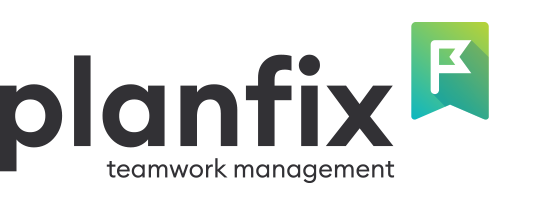
Enterprise Project Management (EPM) is a central component of modern project management, especially for large organizations that handle multiple projects simultaneously. HTF Market Intelligence predicts that the global enterprise performance management software market will exhibit a CAGR of 10.1% during the forecast period from 2023 to 2028. This guide analyzes EPM and examines its definition, functions, and strategic implications for organizations managing large-scale project landscapes.
What Is Enterprise Project Management?
Enterprise Project Management oversees numerous projects simultaneously, even when they seem independent. Unlike traditional project management, where project managers focus on individual projects, EPM takes a higher-level, less detailed approach. It emphasizes aligning projects with organizational goals, ensuring efficiency and strategic cohesion. In understanding EPM, one must delve into its distinctive components, each playing a crucial role in fostering strategic project success.
Risk Analysis
Central to EPM is the meticulous analysis of risks associated with projects. Unlike traditional project management, where risks are often addressed reactively, EPM adopts a proactive approach. Through comprehensive risk analysis, organizations can anticipate challenges, devise mitigation strategies, and ensure projects align with overarching business objectives.
Resource Management
Efficient allocation and utilization of resources are paramount in EPM. This element focuses on optimizing the allocation of human, financial, and material resources across multiple projects. By strategically managing resources, EPM enhances project efficiency, minimizes bottlenecks, and ensures the seamless execution of the entire project portfolio.
Collaboration and Communication
In the realm of EPM, collaboration and communication stand as cornerstones. Facilitating transparent and streamlined communication channels ensures that project teams remain interconnected. Collaboration tools integrated into EPM platforms enable real-time sharing of information, fostering a cohesive teamwork environment across diverse projects.
Performance Measurement
EPM places a strong emphasis on performance measurement and evaluation. This element involves defining key performance indicators (KPIs) aligned with organizational goals. Regular assessments of project performance against these metrics empower stakeholders with insights, enabling data-driven decision-making and continuous improvement.
Strategic Alignment
Unlike traditional project management, which often operates in silos, EPM ensures strategic alignment with organizational objectives. This element involves mapping each project’s goals and outcomes to the broader strategic vision of the organization. EPM becomes the navigational tool steering projects towards overarching business success.
Reporting and Analytics
Robust reporting and analytics mechanisms distinguish EPM from its counterparts. This element involves the generation of detailed reports and analytics, offering stakeholders a comprehensive view of project progress, resource utilization, and potential areas for improvement. Informed decision-making thrives on the insights derived from these analytical tools.
Change Management
EPM recognizes the inevitability of change in project dynamics. This element involves adopting a proactive change management approach, ensuring that projects remain adaptable to evolving circumstances. By integrating change management practices, EPM mitigates disruptions and facilitates smooth transitions, contributing to project resilience.
Understanding these seven key elements provides organizations with a holistic perspective on the multifaceted nature of Enterprise Project Management. Each element contributes uniquely to the success of EPM, collectively creating a framework that not only manages projects but strategically propels organizations toward sustained excellence.
Project Management Software vs. Enterprise-Level Solution
Embarking on a comparative exploration of Project Management Software (PMS) and Enterprise Project Management (EPM) unravels nuanced distinctions that extend beyond mere scope and responsibilities:
- Scope and Responsibilities:
— PMS focuses on individual project intricacies
— EPM serves as an organizational overseer, managing the entire project portfolio to align with strategic goals. - Focus and Reporting Hierarchy:
— PMS project managers report within project hierarchies.
— EPM introduces a distinctive reporting structure, with managers reporting to higher organizational leadership. - Strategic Role of EPM Managers:
— EPM managers play a broader, strategic role in aligning projects with business objectives.
— Traditional project management involves tactical management. - Holistic Business Alignment:
— PMS may foster project-centric myopia.
— EPM ensures holistic alignment, steering projects to synchronize with the broader strategic vision. - Comprehensive Oversight:
— PMS provides isolated project oversight.
— EPM offers a panoramic view of the entire project portfolio, considering interdependencies and resource allocations. - Unified Information Management:
— PMS operates in isolation.
— EPM integrates data from diverse projects for consolidated, coherent insights and informed decision-making. - Long-Term Strategic Planning:
— PMS often focuses on short-term tactical planning.
— EPM extends to long-term strategic planning, guiding projects toward future aspirations and sustained growth.
As we scrutinize the distinctions between Enterprise Project Management Software and Project Management Systems, it becomes evident that EPM transcends the confines of individual projects. It emerges as a strategic orchestrator, aligning projects with organizational goals and providing comprehensive oversight beyond traditional project management’s purview.
EPM Solutions for Enterprise
Enterprise Project Management solutions offer a range of capabilities tailored for large-scale organizations. These include:
Teamwork and Collaboration
In enterprise project management (EPM), fostering seamless teamwork and collaboration is a foundational pillar. Planfix addresses this imperative by providing robust collaboration features. Furthermore, Planfix goes beyond basic collaboration, offering advanced features like task assignment, real-time updates, and shared workspaces. This enhances the collaborative experience, establishing its pivotal role in successful enterprise project management.

Automation Tools
Automation is the heartbeat of efficient enterprise project management, and Planfix recognizes this fundamental need. The platform integrates powerful automation tools, streamlining routine tasks and reducing manual intervention. Planfix’s automation capabilities extend to task scheduling, progress tracking, and data updates, empowering enterprises to achieve operational efficiency. By automating repetitive processes, Planfix allows teams to focus on strategic initiatives, enhancing overall productivity and project success.

All-in-One-Solution
In pursuing an optimal enterprise project management solution, an all-in-one solution emerges as a game-changer. Planfix positions itself as a comprehensive all-in-one solution for enterprise, consolidating project management, collaboration, and automation within a single platform. With Planfix, enterprises gain a holistic solution that caters to diverse project management needs, creating a seamless and efficient operational environment.

Unified Reporting and Analytics
Beyond the specified categories, Planfix extends its EPM capabilities to encompass unified reporting and analytics. It empowers enterprises to generate comprehensive reports, offering insights into project progress, team performance, and overall business efficiency. Planfix’s emphasis on unified reporting enhances the effectiveness of enterprise project management, aligning projects with organizational goals.

Planfix positions itself as a robust EPM solution that goes beyond conventional project management tools. Its focus on collaboration and automation and offering an all-in-one solution make it a competitive choice for enterprises seeking to elevate their project management endeavors. And the utilization of Planfix’s ready-made solutions further underscores its commitment to meeting the specific needs of enterprise-level project management.
Benefits of Enterprise Project Management Software
Enterprise project management has emerged as a pivotal concept in modern project management. Unlike traditional project management, EPM takes a higher-level, less detailed approach, overseeing multiple projects simultaneously. Let’s delve into the key aspects of EPM and explore why it’s considered a dynamic catalyst for organizational success.
Enhanced Strategic Alignment
Enterprise Project Management software serves as a dynamic catalyst for organizational success by enhancing the strategic alignment of projects with overarching business objectives. This pivotal advantage fosters a cohesive and synchronized organizational strategy.
Cultivating Collaboration Excellence
EPM fosters improved collaboration and communication among team members, streamlining project coordination and cultivating an environment conducive to innovation and idea sharing. The result is a more interconnected and efficient project management landscape.
Efficient Resource Allocation
Enterprise project management tools enable organizations to optimize resource allocation across projects, preventing bottlenecks and ensuring the efficient utilization of available resources. This not only contributes to cost-effectiveness but also enhances overall productivity.
Holistic Project Oversight
In project oversight, EPM provides a comprehensive view of the project portfolio. This holistic perspective facilitates better decision-making and resource planning, empowering organizational leaders to make informed choices based on a thorough understanding of their projects.
Unified Information Management
EPM brings unified information management by integrating and harmonizing data from diverse projects. The software provides leaders with consolidated and coherent insights, enhancing information accessibility.
In summary, the benefits of Enterprise Project Management Software extend across strategic alignment, collaboration, resource allocation, project oversight, and unified information management.
How to Implement Enterprise Project Management?
Implementing EPM involves several steps, with platforms like Planfix providing user-friendly support:
- Assessment: Identify organizational needs and goals.
- Planning: Develop a comprehensive plan for implementation.
- Training: Educate teams on EPM tools and processes.
- Support: Leverage available support, documentation, and videos.
For a more detailed guide on implementing EPM with Planfix, refer to Planfix’s Support.
In conclusion, Enterprise Project Management with platforms like Planfix is not just a tool; it’s a strategic asset that elevates project management to align seamlessly with organizational goals.
FAQ about EPM Software
What Are the Key Elements of an Enterprise Project Management System?
The key elements of an Enterprise Project Management (EPM) system include project portfolio management, resource allocation, collaboration tools, and comprehensive project oversight.
Is EPM Different from CRM?
EPM (Enterprise Project Management) and CRM (Customer Relationship Management) are distinct systems. While EPM focuses on managing projects and resources, CRM is designed for customer relationship management, covering sales, marketing, and customer service functionalities.
Conclusion
Enterprise Project Management (EPM) is a transformative force for large-scale organizations handling concurrent projects. EPM software, regarded as one of the best enterprise project management tools, provides a strategic vantage point and alignment for diverse projects in today’s dynamic business landscape. Unlike traditional project management, EPM emphasizes organizational goals, ensuring efficiency and strategic cohesion. This guide delves into the nuanced distinctions between project management software and enterprise-level solutions, showcasing the multifaceted benefits offered by EPM, making it a pivotal investment for reshaping large enterprises’ project management approaches.

